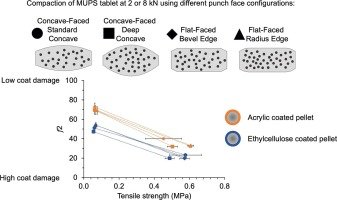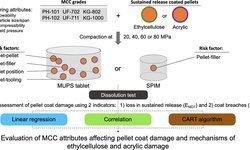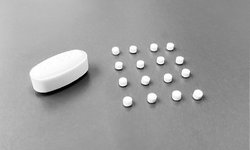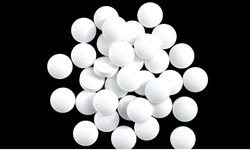Scientific papers
The impact of punch face design on multi-unit pellet system (MUPS) tablets was examined in this study. Drug-loaded pellets, coated with sustained-release polymers such as ethylcellulose or acrylic, were compacted to form MUPS tablets. Various punch face designs were employed, including standard concave, deep concave, flat-faced bevel edge, and flat-faced radius edge. MUPS tablets compacted at either 2 or 8 kN were analyzed for their tensile strength. The degree of damage to pellet coatings post-tableting was assessed through drug release profiles. Biconvex tablets exhibited a slight weakness ranging from 0.01 to 0.15 MPa, depending on the type of pellets used, and displayed 1% to 17% higher elastic recovery (p < 0.000) compared to flat-faced tablets. With increased compaction force, the utilization of a deep concave punch resulted in a 13% to 26% reduction in pellet coat damage, as indicated by a relatively longer mean dissolution time, in contrast to other punch face configurations (p < 0.000). This effect was attributed to the heightened punch concavity, which enhanced the rearrangement energy of the compacted material, thus alleviating the compaction stress exerted on pellet coats. However, despite this reduction in stress, tablets produced with the deep concave punch and containing pellets coated with acrylic were found to be weaker (p = 0.01). In summary, the punch face configuration significantly influenced the quality of MUPS tablets.

Comments
No comments posted yet.
Add a comment















